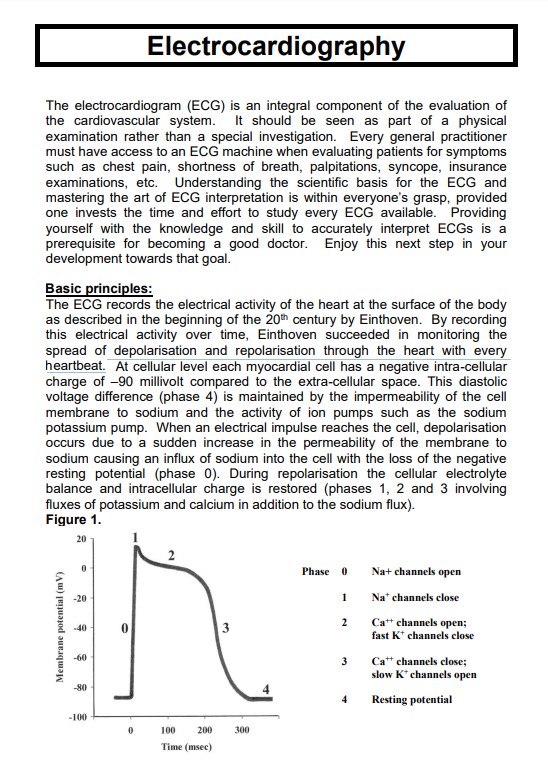Essential Guide to ECG Interpretation (Grade A)
Summary:
The Essential Guide to ECG Interpretation focuses on the rapid review of electrocardiography (ECG) interpretation. It emphasizes the importance of ECG as an integral component of cardiovascular evaluation and encourages its utilization as part of a physical examination. The text explains the basic principles of ECG interpretation, such as the recording of electrical activity, depolarization and repolarization phases, and the significance of different deflections seen on an ECG. It also highlights the role of specialized conductive tissue and the coordinated depolarization of the myocardium. The text briefly discusses the P-wave representing atrial depolarization, the QRS complex indicating ventricular depolarization, and the T-wave representing ventricular repolarization. The reading demonstrates how different electrode positions can affect the deflections recorded in the ECG, specifically focusing on electrodes A and B placed at different positions on the chest. Overall, the text serves as a concise introduction to ECG interpretation, intended for medical students seeking to enhance their understanding of ECG readings.
Excerpt:
Essential Guide to ECG Interpretation
ElectrocardiographyThe electrocardiogram (ECG) is an integral component of evaluating the cardiovascular system. It should be seen as part of a physical examination rather than a special investigation. Every general practitioner must have access to an ECG machine when evaluating patients for symptoms such as chest pain, shortness of breath, palpitations, syncope, insurance examinations, etc. Understanding the scientific basis for the ECG and mastering the art of ECG interpretation is within everyone’s grasp, provided one invests the time and effort to study every ECG available. Providing yourself with the knowledge and skill to accurately interpret ECGs is a prerequisite for becoming a good doctor. Enjoy this next step in your development towards that goal.
Basic principles:
The ECG records the electrical activity of the heart at the surface of the body as described at the beginning of the 20th century by Einthoven. By recording his electrical activity over time, Einthoven succeeded in monitoring the spread of depolarisation and repolarisation through the heart with every heartbeat.


Reviews